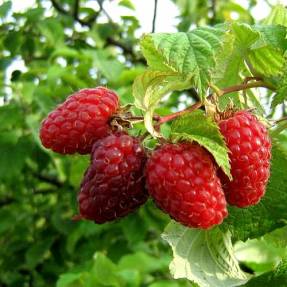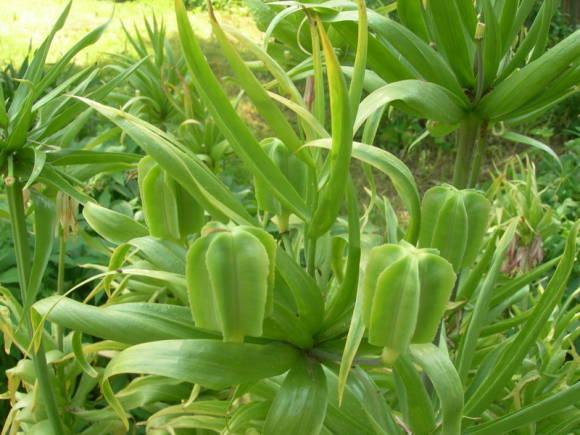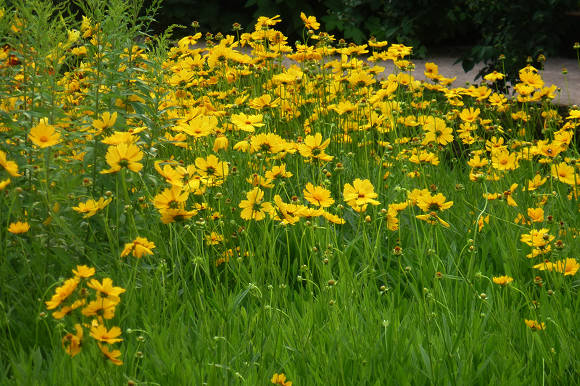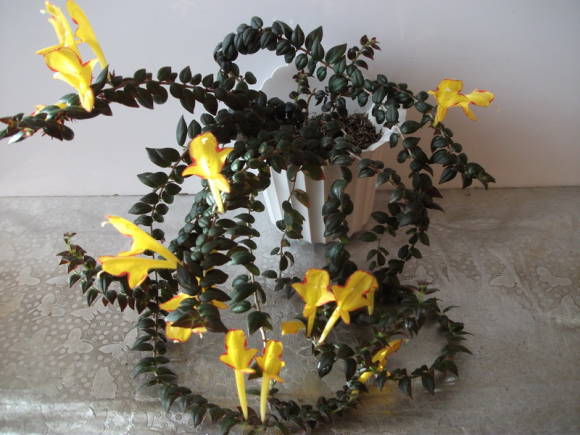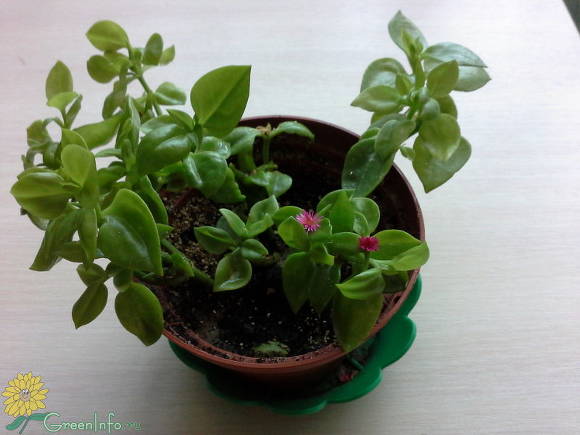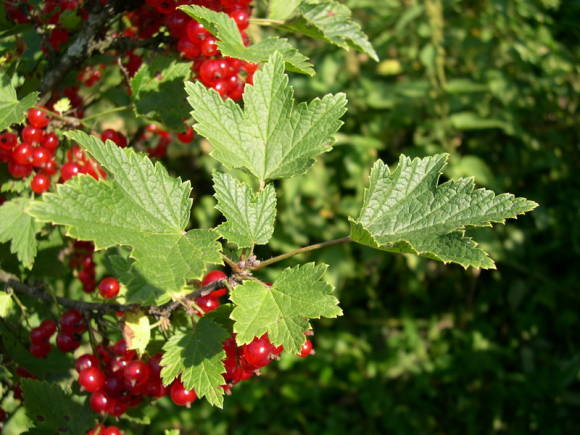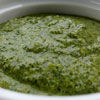The group Species Pelargoniums includes natural species and hybrids of pelargoniums.
Almost all representatives of the genus Pelargonium (Pelargonium) geranium family (Geranuiaceae) come from South Africa, several species are found on the islands in the Indian Ocean, Australia, Syria, tropical Africa and New Zealand. According to the latest catalogs of the South African flora, about 270 species of pelargonium are registered here (more than 80% of the total species composition of the genus). Interestingly, in South Africa, pelargoniums are also called mallows, with which they have nothing in common, except for the color scheme.
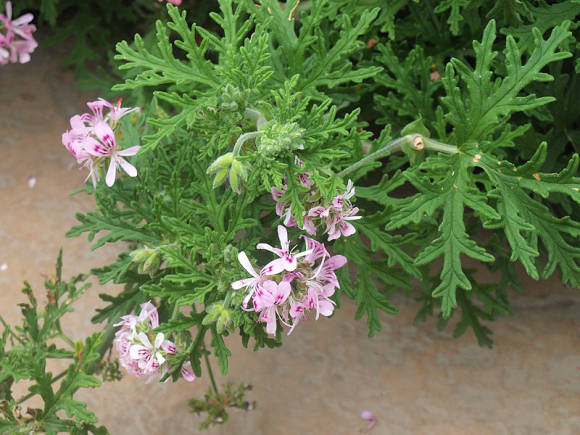 |
Among the pelargoniums, there are deciduous and evergreen shrubs and semi-shrubs, tuberous perennials, less often annuals. Evergreens are species that grow mainly in the Cape Province of South Africa, where there are 150 species. Few species shed foliage during dormancy - caudex succulent pelargonium fluffy(Pelargonium crithmifolium)growing in the Karoo Desert, bushy lodging pelargonium quadrangular(Pelargonium tetragonum), also from South Africa.
The species described below played a large role in hybridization or are in collections (most of them come, of course, from the Cape Floristic Kingdom). And this is not a complete list, but sufficient to show a wide variety of forms of species pelargonium.
 |  |
| Photo from Namaqualand province: Irhan Udulag (South Africa) |
Pelargonium shining (Pelargonium fulgidum) grows on rocky slopes and coastal granites of the Namaqualand province and the west coast of South Africa. Squat shrub with semi-succulent creeping stems up to 40 cm in height (sometimes higher), with small lobular, dense, silvery-silky leaves 10-17 mm in diameter. The flowers are scarlet, 1.5-2 cm in diameter, collected in inflorescences of 4-9. Easily crossed, has been used to produce many primary and modern hybrids.
Pelargonium curly(Pelargonium crispum) grows on the rocky slopes of the southwestern part of the Cape. Evergreen, highly branched shrub up to 70 cm tall, with woody stems from below and small coarse cordate 3-lobed leaves, unevenly toothed along the edge, having curly edges and smelling like lemon. The flowers are small, up to 1 cm in diameter, lavender, on short pedicels up to 2.5 cm long, located on short pedicels, 1-3. The two upper petals are bent in the form of a spoon, have marks, the three lower ones are more elongated. It was used to obtain many varieties of scented pelargoniums, as well as angels and some unique ones.
 |  |
Pelargonium aromatic, or fragrant, or strong-smelling(Pelargonium graveolens) - strongly branched, covered with short glandular hairs, shrub up to 1 m tall. The leaves are 5-7-lobed, with deeply indentable lobes, pubescent on both sides, have a strong pleasant rose aroma. Umbrellas are multi-flowered, of pink or deep pink flowers. The ancestor of a large group of fragrant varieties and hybrids obtained by crossing with P. capitatum and P. radens.
Pelargonium is the most fragrant, or fragrant(Pelargonium odoratissimum) - distributed in the south in the Western and Eastern parts of the Cape. A low shrub with tuberous thickened roots and rough scaly due to stipules remnants of the main stem and branched short shoots, up to 30 cm tall. It has small white flowers with crimson marks on the upper two petals, collected in inflorescences of 5, and rounded-cordate foliage with a crenate edge of the color of an apple green, pleasant to the touch due to short soft silky hairs. The leaves emit a strong apple-mint scent when touched.
Pelargonium staining(Pelargonium inquinans) - shrub up to 1.5 m tall, young shoots are pubescent, more or less fleshy. The leaves are rounded-reniform (sometimes divided into small lobes), glandular pubescent. Umbrellas consist of scarlet-red flowers on short stalks. This species is one of the ancestral forms of hybrid zonal pelargonium (Pelargonium zonale hybridum).
 |  |
Pelargonium felt(Pelargonium tomentosum) - an evergreen shrub up to 60-75 cm tall, with small flowers of oblong petals with magenta-colored spots at the base and the same bright pistils. The leaves are rather large, rounded, half dissected into 3-5 heart-shaped lobes, and have the smell of peppermint. It got its name for the soft velvety pubescence of stems, leaves, and especially peduncles.
Pelargonium capitate(Pelargonium capitatum) - evergreen shrub 0.5 m (in nature up to 1 m) tall, characterized by straight, widely spread, densely pubescent shoots, 3-5-lobed leaves serrated along the edge and multi-flowered capitate inflorescences consisting of sessile purple-pink flowers .. Foliage has a pleasant aroma, the plant is grown on an industrial scale to obtain an essential oil, which is close to pink in aroma.
 |  |
Pelargonium long-stemmed(Pelargonium longicaule) - a small openwork shrub of sandy and coastal areas of the south-west of the Cape province with creeping or spreading shoots, small strongly dissected foliage up to 4 cm long and pale pink or yellowish, with purple venation, flowers 3-6 cm in diameter, resembling moth flowers of legumes (two the upper petals are wide, the lower three are greatly reduced).
Pelargonium ivy(Pelargonium peltatum) - an evergreen shrub with branched, drooping, bare, slightly ribbed branches covered with fine hairs. The leaves are fleshy, corymbose, divided into 5 obtuse lobes, the surface is glossy green, glabrous or slightly pubescent. Pink-red or white flowers are collected in 5-8 umbellate inflorescences. This species has many decorative forms, it is used as an ampelous plant in the garden and indoors.
 |
Pelargonium oakleaf(Pelargonium quercifolium) - large pelargonium, growing up to 1 m, with leaves deeply dissected into 5-7 coarse-toothed lobes, glandular, sticky, with a lemon-mint aroma. Inflorescences - umbrellas of 10 flowers up to 2.5 cm in diameter, pink with dark pink markings. Described in 1781 by Linnaeus the Younger from material collected by Karl Thunberg during an expedition to the Cape of Good Hope in 1772-75.
Pelargonium pink (Pelargonium radens syn. P. roseum, P. radula) is an evergreen branched shrub up to 1.5 m high, covered with short, hard hairs. Leaves with a pleasant aroma, deeply divided. The lobes are linear, densely pubescent from above, pubescence is less common from below, the hairs are softer, the edges of the leaves are curved. The inflorescence consists of 4-5 medium-sized flowers of a pale purple color, with dark, clearly pronounced veins. The peduncle is densely pubescent.
Pelargonium zonal(Pelargonium zonale) - evergreen shrub 0.8-1.5 m tall with fleshy, pubescent shoots. The leaf shape is cordate-rounded, the leaves are whole or slightly lobed, glabrous or soft-haired, on the front side of the leaf blade there is a brown or dark brown band-belt. The inflorescence consists of numerous sedentary carmine-red flowers. Is the ancestor of garden zonal pelargonium (Pelargonium zonale hybridum).
Pelargonium false sticky(Рelargonium pseudoglutinosum) - a shrub with long, heavily cut openwork leaves. The flowers are pink, in rounded terminal inflorescences. Named for the similarity of foliage to Pelargonium gummy (Pelargonium glutinosum), which, in contrast, has sticky, with glandular hairs, leaves and stems, with a scent of lemon and mint. Pelargonium transvaal(Рelargonium transvaalense) - tuberous herbaceous perennial, blooms all summer long with large, up to 3 cm in diameter, bright pink flowers with oblong petals marked with magenta veins. But it is more interesting with paper-thin toothed 5-lobed leaves with a red-burgundy zone, sometimes merging into a single spot of the shape of a maple leaf. Petioles, peduncles, pedicels are red-burgundy. Unpretentious, moisture-loving and shade-loving. Named for the South African province of Transvaal (now Mpumalanga), where it was first collected in 1883 by the South African botanist of English origin John Madley. Pelargonium nodule(Pelargonium cucullatum) - a highly branched shrub with densely pubescent shoots. The leaves are reniform and also densely pubescent.Umbrellas are multi-flowered, the flowers are purple-red. The form "Flora Pleno" with double flowers was used to create garden forms of pelargonium. Pelargonium longifolia(Pelargonium longifolium) is a stemless species that grows on the sandy soils of the Cape of Good Hope. Forms caudex up to 3 cm thick and rosette of bluish pinnate or double-feathery foliage up to 12 cm long, on long petioles, rarely pubescent with appressed hairs. The flowers are white, cream, yellow or pink with dark red markings. Pelargonium angular(Pelargonium angulosum) - subshrub up to 1 m tall with oval, 3-5-angular lobed, broadly wedge-shaped, pointed leaves on short petioles at the base. The inflorescence is a multi-flowered umbrella, the color of the flowers is bright red. This species was used to obtain garden pelargoniums together with large-flowered pelargonium (P. grandiflorum). Pelargonium grandiflorum(Pelargonium grandiflorum) - an evergreen branched shrub up to 90 cm high. The shape of the leaves is reniform-rounded, the leaves are divided into 5-7 lobes, glabrous or silky-hairy, the edges of the leaves are coarsely toothed. On the peduncle there are 2-3 white or reddish veins of a flower with a diameter of 2.5-3.5 cm.Used in works on breeding hybrid garden forms of large-flowered pelargonium (Pelargonium grandiflorum hybridum). Bowker's Pelargonium(Pelargonium bowkeri) Is a perennial tuberous species from the east of South Africa. It has a short stem and pubescent feathery leaves with glands. The flowers are located on a high, up to 35 cm, peduncle, yellow-pink, strongly fringed, collected in an amount of 4-12 in a false umbrella. Pelargonium Wood(Pelargonium woodii) - a little known and rare species found in 1912 in KwaZulu-Natal (South Africa). Tuberous, with fragrant leaves and fringed flowers of yellow-green color. Perhaps one of the forms P. schizopetalum. Pelargonium smooth(Pelargonium laevigatum) - a small shrub up to 50 cm high, very variable in the type of growth - compact, erect, loose or spreading. The stem is smooth, herbaceous. Leaves are smooth, slightly fleshy, trifoliate, 1.5-10 mm wide. The flowers have 5 petals, two of which are much larger than the other three. The petals are white, cream or pink with purple feather markings. It blooms throughout the year, most abundantly in spring and summer. The species was first described by the Swedish botanist Karl Linnaeus the Younger from a specimen brought by Karl Thunberg from an expedition to the Cape of Good Hope in 1772-75. Pelargonium dichondrolytic(Pelargonium dichondraefolium) - evergreen pelargonium with small silvery-gray velvety foliage resembling dichondra foliage. The flowers are white or pale pink, with a red feather. Refers to fragrant pelargonium, the leaves have a complex aroma of lavender and black pepper. Pelargonium lamellar(Pelargonium tabulare) - endemic to South Africa. Perennial plant 30 cm high with sparsely hairy stems, kidney-shaped softly pubescent fragrant leaves and white or pink flowers. Pelargonium lanceolate(Pelargonium lanceolatum) - a plant of sandy and rocky habitats, has a very limited distribution in Worcester (South Africa). An upright semi-shrub with woody stems at the base. The leaves are dense, lanceolate, gradually turning into a petiole, curled up with a spoon, gray and fleshy. The color of the flowers ranges from pale yellow to white, with a red spot in the center of the two upper petals connecting two red strokes. Small-flowered pelargonium(Pelargonium parviflorum) - South African succulent up to 30 cm tall. Leaves with a scent of coconut. The flowers are small, purple. They are a little hidden in the foliage. It has been grown since 1789. Pelargonium hornifolia(Pelargonium ceratophyllum) - grows in the southwestern part of Namibia and in the north of South Africa on sandy or other well-drained soil in conditions of lack of moisture and high insolation. A widespread succulent plant 25-40 cm tall with a thick, up to 3 cm, branched caudex, covered with yellow, green or brown scaly bark. The flowers are greenish, white or dark pink, with narrow petals and large stamens, collected in false umbrellas (up to 60 pieces) at the ends of long-haired glandular peduncles up to 1 m tall.It blooms in a leafless state, fleshy smooth pinnate leaves up to 5-12 cm long and 2-8 cm wide bloom next fall. Pelargonium cotyledon(Pelargonium cotyledonis) - grows only on the island of St. Helena in the Atlantic Ocean west of Africa (the very one where Napoleon Bonaparte was exiled). It is a small, branched caudex shrub up to 75 cm tall, sometimes taller. Stems are rough, juicy, up to 5 cm in diameter. Leaves falling in summer, simple, heart-shaped, up to 10 cm long, green at first, later becoming reddish, have narrow triangular tomentose stipules 3-5 mm long and 1-2 mm wide. The flowers are white, collected in inflorescences. The Ventnor variety is known with pubescent leaves above and below. Pelargonium blade(Pelargonium lobatum) grows in rainy areas of South Africa, in well-drained soils with little water and sun. A stemless succulent with a tuberous root, up to 40 cm high with caudex up to 20 cm thick, covered with brown scaly bark. Leaves can grow up to 30 cm in diameter, wide, three-lobed, unevenly incised along the edge, glandular, tomentose. The flowers are dark purple, almost black, with a creamy yellow edging, with yellow stamens, collected 6-20 in false umbrellas on legs up to 70 cm tall. The flowers are fragrant at night. Pelargonium ferulic(Pelargonium ferulaceum) - caudex low-branched shrub up to 120 cm tall, with gray knotty stems up to 5 cm thick. The leaves are deeply pinnate, on long petioles. The flowers are white or greenish, with pink markings at the base of the two upper petals and large pointed sepals, collected in apical inflorescences. Pelargonium quadrangular(Pelargonium tetragonum) is a South African plant of dry rocky habitats. Differs in almost naked, 3-4-sided, segmented juicy stems, reminiscent of euphorbia. Leaves are not always available, they are fleshy, kidney-shaped, unevenly toothed, sometimes with a reddish zone. The flowers are very attractive, creamy pink, consisting of two large upper petals with red veins and a pair of smaller lower petals, sitting in pairs on peduncles. Pelargonium tricolor (Рelargonium tricolor syn. P. violareum) - South African low view, up to 30 cm, with bluish pubescent (especially from below) foliage, easily recognizable elongated, with irregular large teeth along the edges, on petioles many times longer than leaf blades. Flowers up to 2 cm in diameter, bright, reminiscent of a tricolor violet - two upper petals are red, with a black spot at the base, three lower ones are white, larger. Besides red and white, there are forms with purple and completely white flowers. Pelargonium barklyi grows in the north-west of the Cape, described in 1891. Herbaceous tuberous pelargonium, forming caudex up to 5 cm in diameter and rosettes of large, heart-shaped, hairy leaves on top - purple below, on top with dark veins and a zone most pronounced in winter. The flowers are large, white, with barely noticeable pink veins at the base of the petals, arranged in 2-5 on long, more than 50 cm, peduncles (in nature, the plant reaches a height of more than 1.5 m). Pelargonium caylae - evergreen, sparsely branched shrub from the southeast of Madagascar. It has heart-shaped soft, velvety, jagged leaves along the edge, a very tall, hard brown peduncle, flowers in inflorescences (up to 15 flowers) with fringed sepals and five bent bright pink petals in the form of an inverted triangle, with a difficult to detect aroma. Pelargonium luridum - places of natural distribution: Congo, Tanzania, Angola, Zambia, Malawi, Zimbabwe, Mozambique, South Africa. A perennial herb that dies off for the winter. Young leaves are almost round or slightly lobed, later becoming more and more dissected into thin lobes resembling fennel foliage. The flowers are usually white or tinged with pink, collected in a false umbrella at the top of a tall peduncle. Luridum in Latin it means pale, yellow. Pelargonium helmsii - grows only in the alpine heath of Kosciuszko in Australia. Perennial herb up to 25 cm in height, softly pubescent. Taproot, somewhat fleshy. Stems are densely bristled, with short, non-glandular and glandular hairs. The leaves are reniform or rounded, 1-4 cm, often shallowly lobed, crenate along the edge, with short scattered hairs, purple underneath. Umbrellas have 5-12 flowers, pink petals. Pelargonium hypoleucum - endemic to the Cape. Herbaceous plant with rounded, fragrant leaves with jagged edges and whitish, pubescent underside. The flowers are small, white-pink, with a purple feathery coloration on the upper wide petal, the lower 3 petals are narrow. Pelargonium x ignescens belongs to the subgroup of hybrid species pelargonium (Species-Hybriden)... It grows in the Cape, but has a hybrid origin from P. fulgens... A slender shrub with fragile stems, large lobed, sharp-toothed, dark green, woolly and grayish leaves below, tall peduncles bearing loose inflorescences with scarlet flowers, the two upper petals of which have large dark spots. Foliage is slightly aromatic.
























